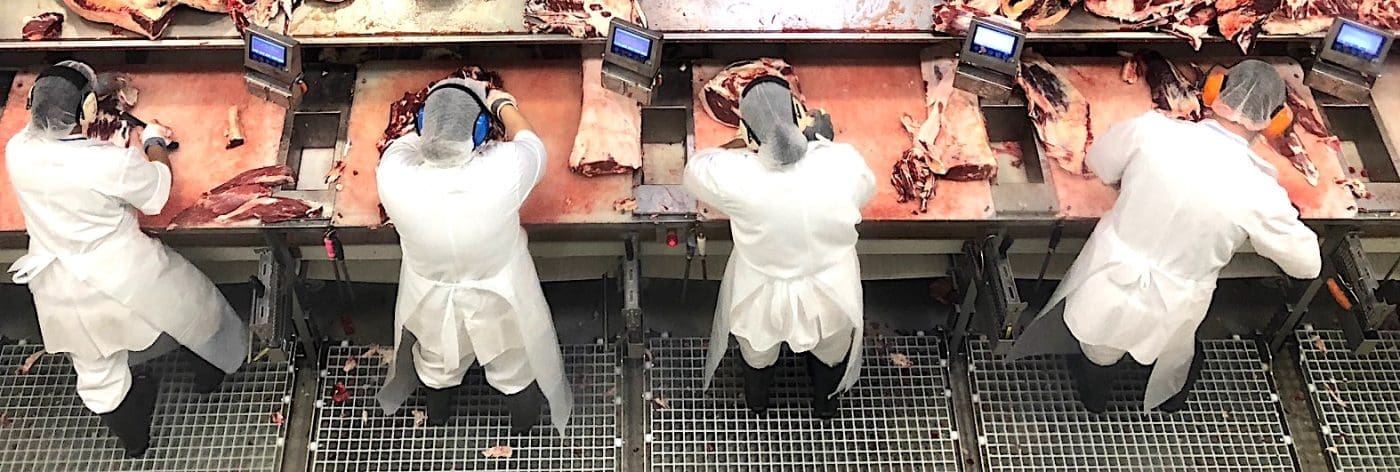
DIRECT consignment slaughter grid offers from Queensland processors have remained at record highs this week, but there has been little evidence of any real response in terms of cattle supply.
Competitive grids in Southern and Central Queensland last week leapt 15c to all-time records of 615c/kg on heavy cows, and +10c to 680c/kg (some of those offers HGP-free only) on four-tooth grassfed ox +300kg.
Several processors said they had picked up a handful of extra cattle as a result of the financial inducement, but numbers remain desperately tight across eastern states.
A 20-40c/kg disparity between slaughter cattle prices in southern states compared with Queensland is seeing a few cheaper cattle being brought north for slaughter.
Current public grids from plants in southern NSW and eastern parts of South Australia have best offers for steers this week at 635c and cows at 580c/kg – a 45c and 35c discount over today’s Queensland rates – more than covering the freight cost to transport those cattle north to slaughter. Hot, dry weather in the south may push a few more southern cattle to market, contacts suggest.
An important secondary factor in current market settings is the need among operators to try to preserve core processing jobs until later into the year. Any early closure would inevitably see skilled slaughtermen and boners drift away from the meat industry to other fields of employment, making it that much harder to recommence operations with any vigour in early 2021.
With early seasonal closures already completed at JBS Townsville, other northern plants are now following suit, as cattle supply is exhausted. Teys Biloela conducts its last 2020 season kill this Thursday, and last boning shift on Friday – again, unusually early, based on recent seasonal performance. Teys will shift remaining Central Queensland cattle to its Lakes Creek facility at nearby Rockhampton for the last few weeks of the current season.
On top of that, saleyards prices – themselves a reflection of the battleground processors are in trying to source stock – remain on par or ahead of equivalent direct consignment rates this week.
Adding to the costly slaughter cattle challenge for processors, the A$ has continued to surge this week on the back of the recent US election result, pushing to US73.2c this morning – a rise of US3c since the start of November. That’s making headwinds even harder for Australian red meat exporters, in what is already a highly competitive international marketplace.
Grinding meat prices, while mounting a modest rally over the past fortnight, remain around 16-month lows, with US imported 90CL cow beef quoted last week at A646c/kg CIF.
Over the hooks quotes in NSW for the week ended Friday showed steer offers unchanged on the week before, with grown steers +300kg quoted at 622c (an average across all NSW plants supplying data to NLRS) and heavy cows averaging 1c higher at 561c/kg.
In Victoria, OTH quotes last week were unchanged for all descriptions, with four-tooth heavy steer at 662c and heavy cows 537c. South Australian average quotes were 580c/kg on heavy cows.
Kills erratic
Eastern states beef kills continued their recent erratic pattern, lifting 7pc from the previous week to 110,134 head for the week ended Friday. Despite the week-on-week improvement, numbers remain 30pc behind this week last year, however.
Recent weather may have played a bigger role than cattle supply or price.
Despite Queensland’s dramatic climb to record grid price offers last week (see references above), kills for the week rose just 1pc, to 54,323 head.
NSW and Victoria showed the biggest adjustments, climbing 16pc on the previous week (29,593 head) and 18pc (18,496 head) respectively. Despite that, Victoria’s kill was still 37pc down on last year.
South Australia dropped 1pc last week to 3909 head (negative 27pc on last year), while Tasmania was unchanged at 3813 head (-24pc).
Christmas closures
More eastern states export processors are now starting to set dates for seasonal holiday closures at the end of the year. Thursday, 18 December is proving a popular choice for last day’s kill, following by the last boning room shift on Friday 19 December. Kills early the following week are impractical, because it provides little or no time for load-out before Christmas, Beef Central has been told.
Some Queensland plants plan to return to work on Monday, January 4 2021, subject to rain.
